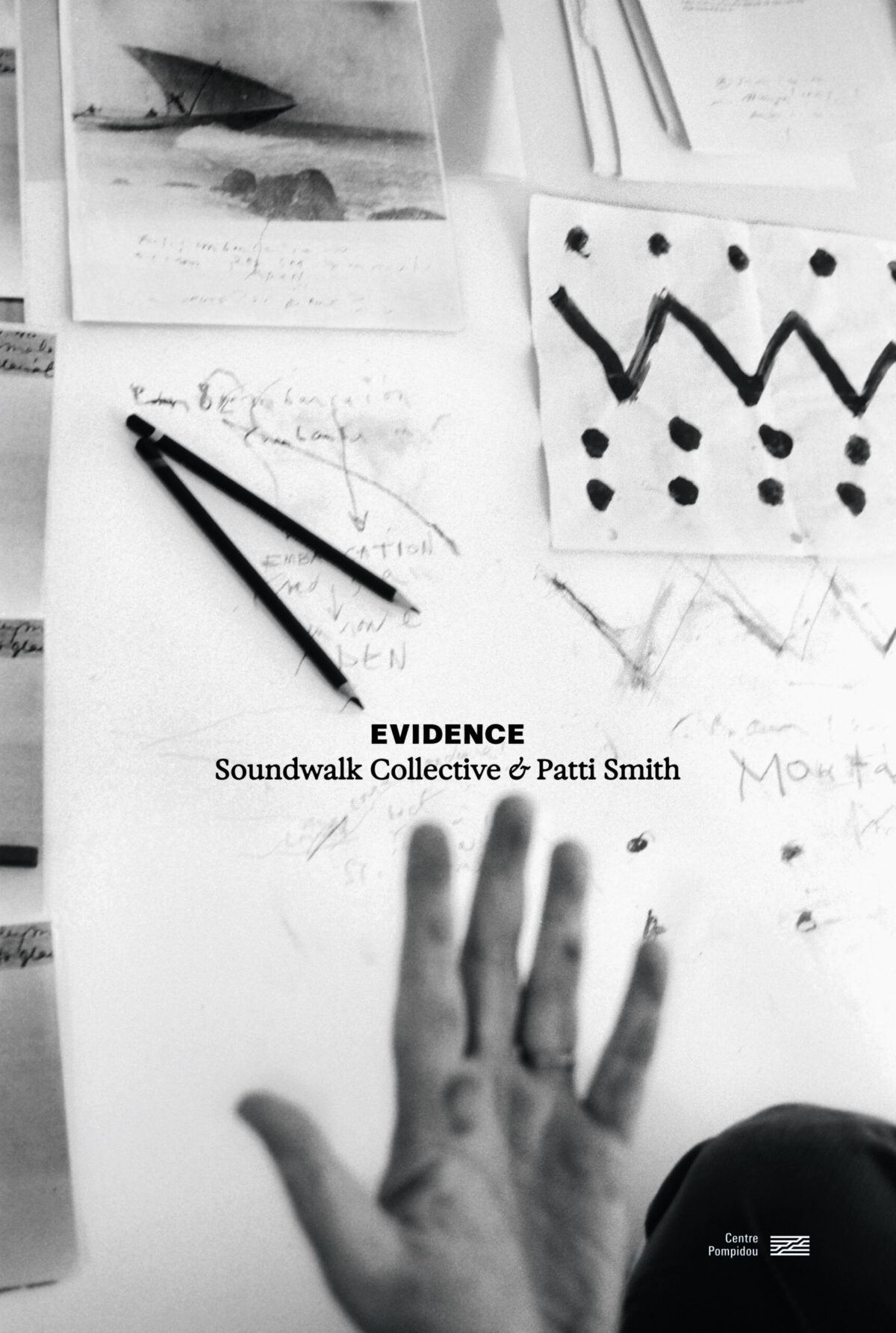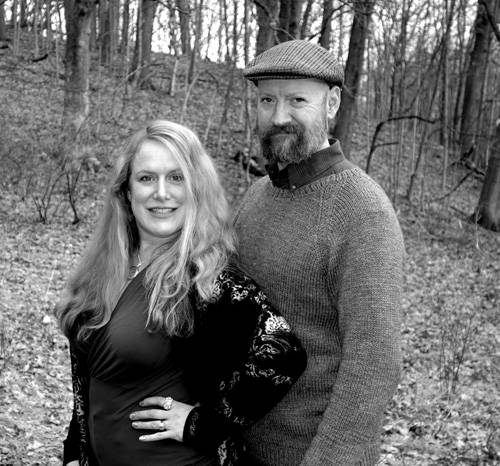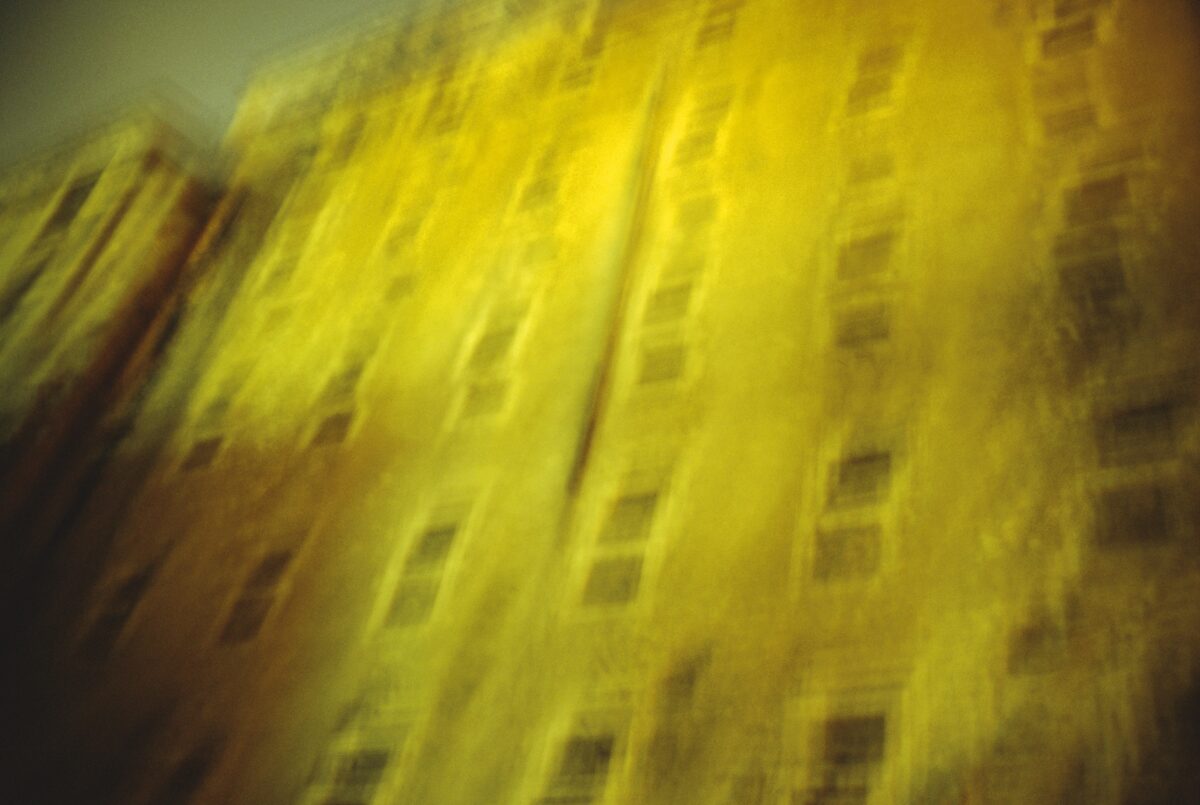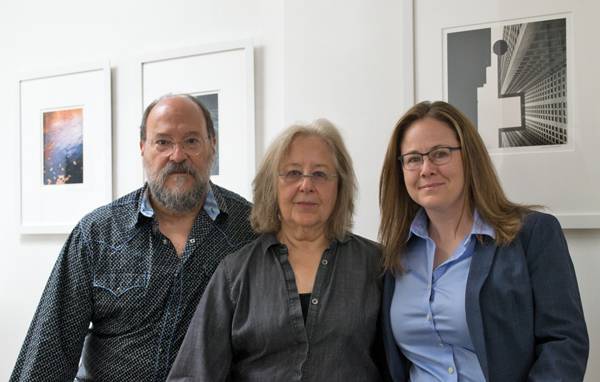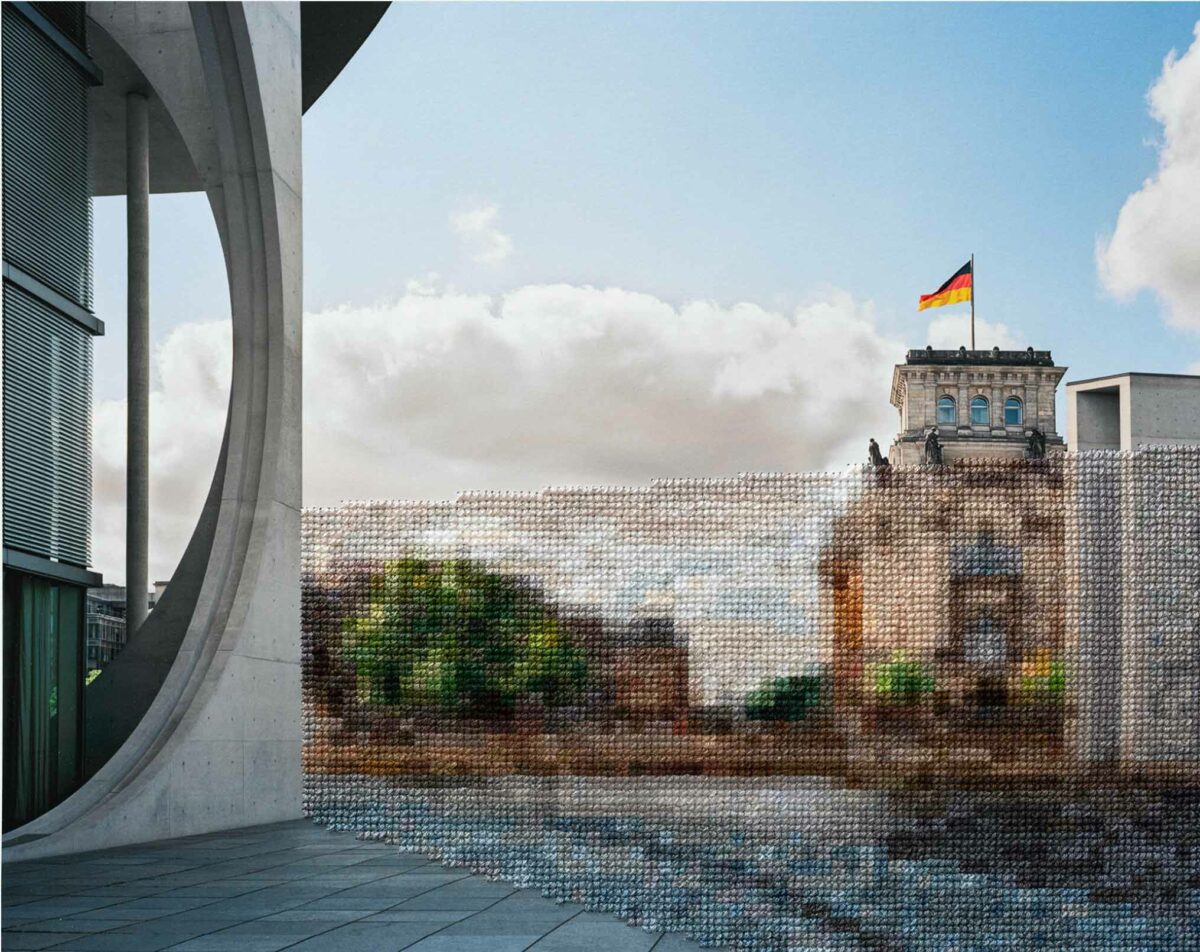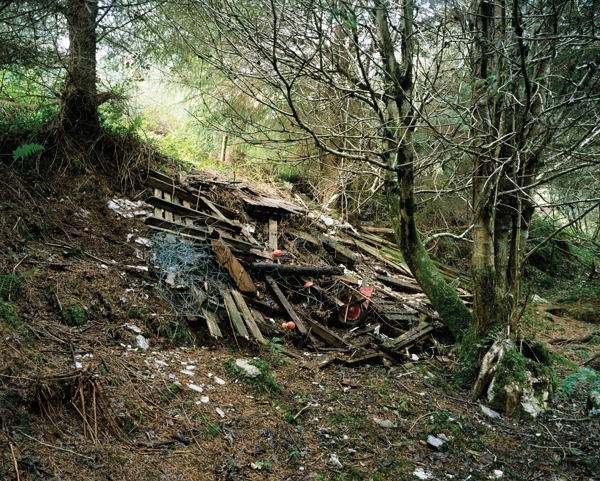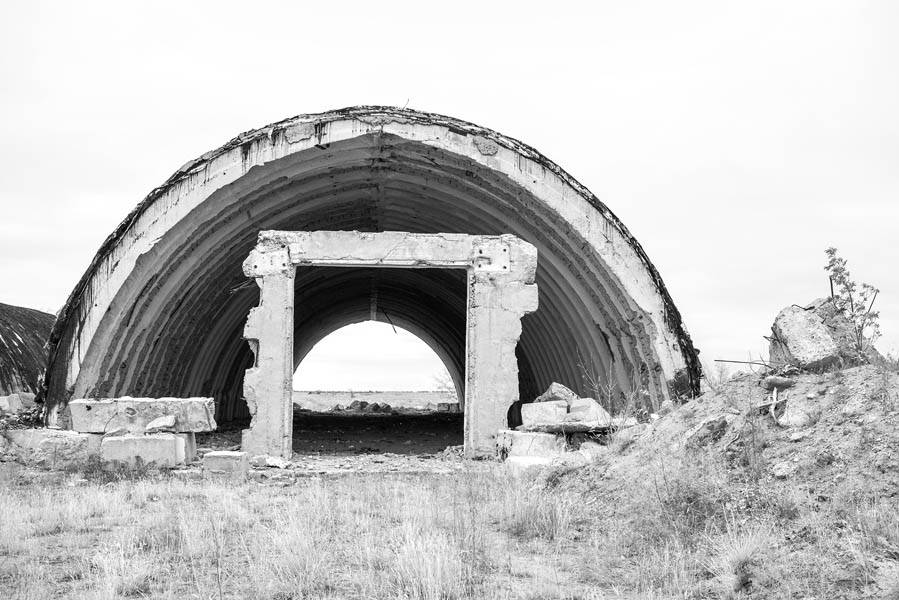

For the January 18 episode of her show Full Frontal, comedian Samantha Bee invited journalist Masha Gessen into her “bunker,” a hidden room behind a bookshelf, inside a Soul Cycle gym. Bee asked Gessen, who fled Putin’s Russia after years as a reporter there, about living under autocracy and Gessen spoke matter-of-factly about her biggest fear: “Really it’s the nuclear holocaust that I’m worrying about.” At least Bee has a bunker.
The specter of nuclear threat, and threats to environment and idealism in general, haunt Ursula Schulz-Dornburg’s photographs of the Semipalatinsk Nuclear Test Site in Kazakhstan, a radiation hot spot shut down in 1991. These black-and-white images, made in 2012, are simultaneously the most romantic and unnerving in Brick and Mortals, at Gallery Luisotti through March 25. The remains of stern concrete structures rest on barren gray landscapes, the centered compositions recalling better-known work by the Bechers and, more subtly, Lewis Baltz. This is unsurprising given that Schulz-Dornburg, a contemporary of the New Topographics, shares their interest in pitting the aspirational man-made against nature. Her image of nuclear test site #34 portrays an angled stand-alone concrete wall, looking more like a neglected monument than anything functional. Her image of test site #15 shows only a concrete block tucked snugly into rugged earth. Stylistically, these photographs recall work we’ve seen before (by Schulz-Dornburg and others since the 1970s), and their general content — abandoned, formerly functional modernism — has been depicted in countless ways. But their familiarity suggests continuity over datedness – they belong to a still-resonant image-making tradition.
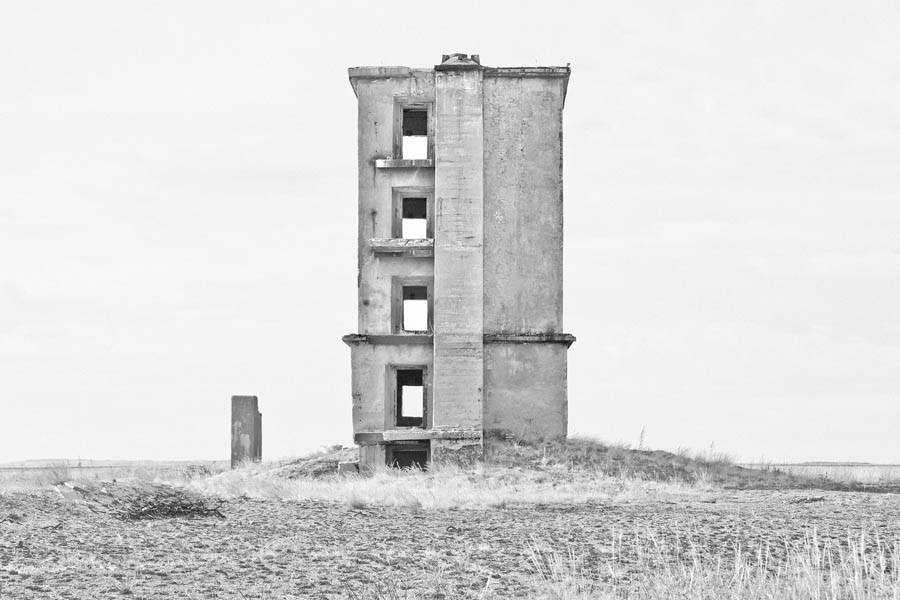

In a 2004 essay, Rebecca Solnit considered Nevada’s nuclear test site, wondering why, even as a thousand nuclear bombs went off in their homeland, U.S. anti-nuclear activists continued “arguing about nuclear war as a terrible possibility rather than an ongoing regional catastrophe?” Haven’t we already been suffering the effects, through radiation and ravaged landscapes?
Medina to Jordan Border, Hejaz Railway, Saudi Arabia (2002-2003), also on view, depicts what remains of a railway connecting Medina, Saudi Arabia, to Damascus, Syria. It was built in 1908 and closed by 1920 due to war and unrest. There is so little in these minimal, quiet images. One depicts two partially visible rails moving off into a sandy horizon – an efficient reminder that this story of damage, unrest and misguided ambition continues.

